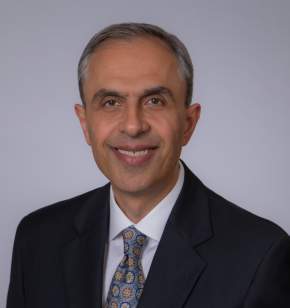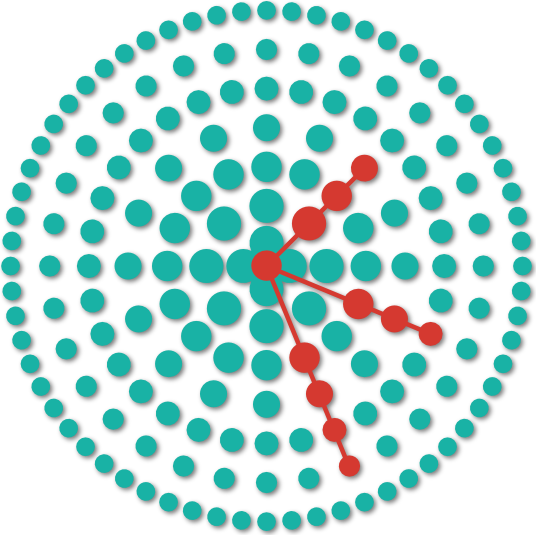Diagnosing Hemifacial Spasm


Hemifacial spasm is a condition in which the muscles on one side of the face twitch involuntarily. These spasms can progressively worsen and lead to difficulty opening the eye on the affected side, facial tightness, resultant social embarrassment, and difficulty with normal vision. The severity of symptoms can vary from person to person. In some cases, disabling spasms can eventually make even taking a sip of coffee in the morning a challenge.
These symptoms can overlap with those of other conditions involving abnormal movements of the face, and unfortunately, diagnosis can remain elusive for years. However, with appropriate diagnosis of hemifacial spasm and treatment, many people can enjoy a life free of these frustrating spasms.
The delayed in diagnosis can be one of the most challenging parts of this disorder. Early and correct diagnosis and surgery by experienced hands can provide early cure and prevent the side effects associated with other treatments including medication and Botox injections.
How Do I Know if I Have Hemifacial Spasm?
The condition often begins with spasms that occur around the eyes. Friends or family might be the first to point out these symptoms. Over time, the spasms can progress to other facial muscles on the same side and increase in intensity. Some common symptoms include the following:
- Painless twitching or spasms of the muscles on one side of the face.
- Spasms occurring during sleep.
- Difficulty closing or opening the eye on the affected side.
- A sensation of facial tightness or discomfort.
If you are experiencing any of these symptoms, it is important to see a healthcare provider, who will be able to perform a physical examination and might order additional tests to help determine the cause of your symptoms. Hemifacial spasm can have a variety of causes, and treatment will depend on the underlying problem. Your doctor will be able to recommend the appropriate treatment options for your specific situation. You should request early surgical evaluation referral from your neurologist to an experienced neurosurgeon and excessive use of Botox injections should be avoided.
What is the Diagnosis of Hemifacial Spasm?
To determine if you have hemifacial spasm, a thorough medical history, physical exam, and diagnostic testing are required. Be sure to see a healthcare professional for a proper diagnosis of hemifacial spasm and treatment plan.
Diagnosis typically begins with a physical exam. Your doctor will look for any signs of muscle contractions or spasms on one side of your face. You might also be asked to make various facial expressions to assess any difficulty you have in performing normal facial movements.
Physical exam findings in patients with hemifacial spasm can include involuntary muscle contractions or spasms on one side of the face, especially around the eye or mouth. These contractions might be intermittent or continuous and can range from mild twitching to more pronounced movements that make it difficult to perform normal facial expressions.
Your doctor might also order diagnostic testing to confirm the diagnosis of hemifacial spasm. One commonly used test is electromyography (EMG), which measures the electrical activity of your facial muscles. EMG can help identify any abnormal muscle contractions or spasms on your face.
Another diagnostic test your doctor might use is magnetic resonance imaging (MRI) of the brain. MRI can help identify any structural abnormalities that might be causing the compression or irritation of the facial nerve, which is the underlying cause of hemifacial spasm. There are several findings that could be seen with MRI in a patient with hemifacial spasm:
- Compression or contact of the facial nerve by a blood vessel: Hemifacial spasm is often caused by compression of the facial nerve by a neighboring blood vessel. Sometimes, this blood vessel can be seen on a regular MRI, and at times, a higher resolution MRI may be needed.
- Other structural abnormalities: In rare cases, hemifacial spasm can be caused by compression of the facial nerve from other causes, such as a brain tumor or arteriovenous malformation.
Note that not all patients with hemifacial spasm will have any visible abnormality, and in some cases, the cause of the spasms cannot be identified with imaging studies.
Why should you have your surgery with Dr. Cohen?
Dr. Cohen
- 7,500+ specialized surgeries performed by your chosen surgeon
- More personalized care
- Extensive experience = higher success rate and quicker recovery times
Major Health Centers
- No control over choosing the surgeon caring for you
- One-size-fits-all care
- Less specialization
For more reasons, please click here.
What Conditions Mimic Hemifacial Spasm?
Several conditions can mimic the symptoms of hemifacial spasm, including the following:
- Tic disorders: Tic disorders, such as Tourette syndrome, can cause involuntary facial movements or spasms. Unlike hemifacial spasm, tic disorders typically affect both sides of the face.
- Epilepsy: Some types of epilepsy can cause facial twitching or spasms. Unlike hemifacial spasm, epilepsy can present with other abnormal movements in regions beyond the face and cause other symptoms.
- Blepharospasm: This condition causes involuntary contractions or spasms of the muscles around the eyes, which can cause the eyes to close tightly or twitch or blink repeatedly. Blepharospasm can cause discomfort, light sensitivity, and difficulty with vision. Unlike hemifacial spasm, blepharospasm affects both sides of the face and does not progress to affect other areas.
- Facial myokymia: This condition is characterized by involuntary twitching or rippling of the muscles of the face. The twitching is typically visible and can occur in one specific muscle or a group of muscles (see more information on this condition below).
What Does Myokymia Look Like?
Myokymia is a condition characterized by involuntary twitching or rippling of the muscles. The twitching can be subtle and might occur in many places. The affected muscle can twitch repeatedly for a period of time, and then the twitching may stop for a while before starting again. The twitching might be more noticeable when the muscle is at rest and might be less noticeable when the muscle is being used.
In facial myokymia, the rippling can appear as worm-like movements under the skin and can be difficult to notice unless observing the face up close. Patients with facial myokymia sometimes also report feeling that their face is stiff. Unlike hemifacial spasm, facial myokymia can disappear after several weeks.
Differentiating between hemifacial spasm and other similar conditions requires the experience of a hemifacial spasm specialist such as a neurologist or a neurosurgeon. Each spasm can have unique characteristics and subtle telltale symptoms that can be hard to distinguish without medical training.
What Specialist Should I See if I Have Hemifacial Spasm?
The specialist best suited for treating hemifacial spasm depends on the underlying cause of the condition. In some cases, hemifacial spasm can be initially treated by a neurologist, who specializes in the diagnosis and treatment of neurological disorders. In other cases, surgery might be necessary to relieve the compression or irritation of the facial nerve. In these cases, an experienced neurosurgeon should be consulted to perform the necessary surgical procedure.
Key Takeaways
- Diagnosing hemifacial spasm involves a comprehensive history and physical examination and an imaging test such as an MRI.
- The symptoms of hemifacial spasm can overlap with those of other movement disorders of the face.
- If you or a loved one has been diagnosed with hemifacial spasm, seek an experienced neurosurgeon for appropriate treatment and management.











